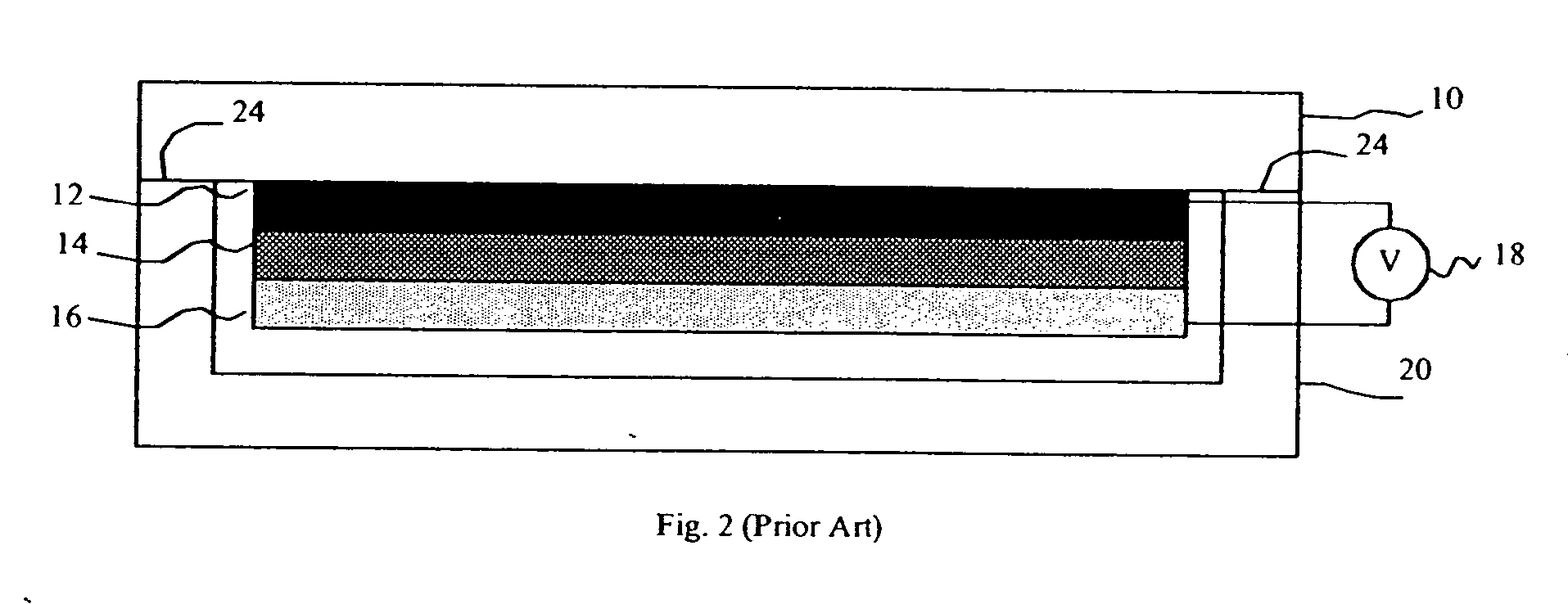OLED device having curved viewing surface
a technology of oled devices and viewing surfaces, which is applied in the direction of thermoelectric devices, sustainable manufacturing/processing, and final product manufacturing, etc., can solve the problems of cracking and moisture permeation of the structure, the rigid structure of the typical structure is not easy to adapt to a curved configuration, and the individual mounting of light emitting diodes is expensive and only suitable for low-resolution displays
- Summary
- Abstract
- Description
- Claims
- Application Information
AI Technical Summary
Benefits of technology
Problems solved by technology
Method used
Image
Examples
Embodiment Construction
[0033] Referring to FIG. 9, a method of manufacturing an OLED device with a curved light-emitting surface comprises the steps of forming 100 a flexible substrate; flattening 105 the flexible substrate to provide the flexible substrate in a flat configuration; forming 110 one or more OLEDs having a first electrode, one or more layers of organic material, at least one of which is light-emitting formed over the first electrode, and a second electrode formed over the one or more layers of organic material, on the flexible substrate while in the flat configuration; forming 115 a rigid, curved, encapsulating cover; conforming 120 the flexible substrate, electrodes, and one or more layers of organic material to the rigid, curved, encapsulating cover; and sealing 125 the conformed flexible substrate, electrodes, and one or more layers of organic material to the rigid, curved, encapsulating cover. The process is then complete.
[0034] The formation of substrates and covers suitable for the pr...
PUM
| Property | Measurement | Unit |
|---|---|---|
| thickness | aaaaa | aaaaa |
| thick | aaaaa | aaaaa |
| flexible | aaaaa | aaaaa |
Abstract
Description
Claims
Application Information
 Login to View More
Login to View More - R&D
- Intellectual Property
- Life Sciences
- Materials
- Tech Scout
- Unparalleled Data Quality
- Higher Quality Content
- 60% Fewer Hallucinations
Browse by: Latest US Patents, China's latest patents, Technical Efficacy Thesaurus, Application Domain, Technology Topic, Popular Technical Reports.
© 2025 PatSnap. All rights reserved.Legal|Privacy policy|Modern Slavery Act Transparency Statement|Sitemap|About US| Contact US: help@patsnap.com



